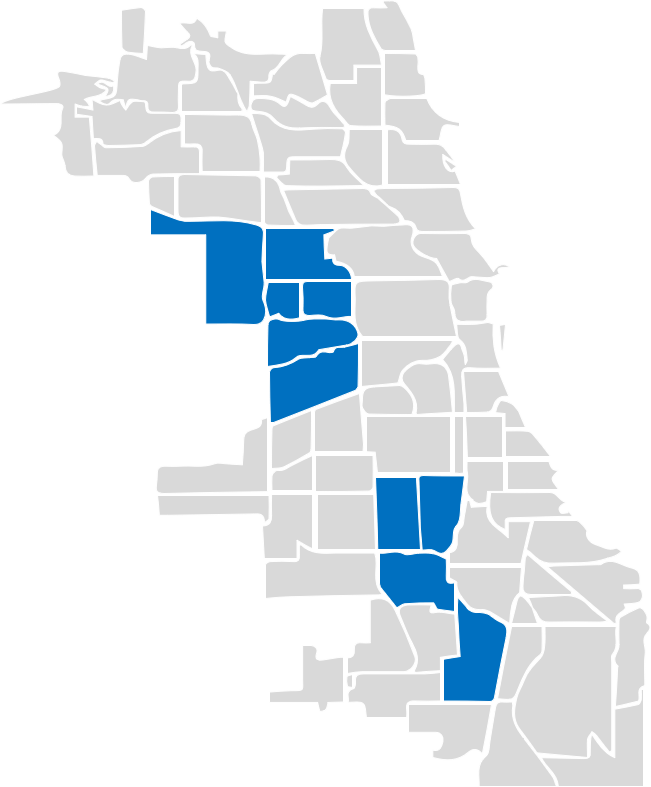Victim Services
In May 2020, the Mayor's Office of Violence Reduction and the Chicago Department of Public Health awarded $1.5 million toward community-based victim services.
Selected organizations provide comprehensive trauma-informed services for victims of violence and their families and other loved ones, including incident response and supporting impacted individuals through one-on-one interactions, support groups, and resource coordination.
The goals of this funding are to:
- Build capacity in organizations with established street outreach programs to provide victim support services or supporting partnerships between street outreach programs and mental health providers to provide victim support services
- Build a comprehensive network of victim support organizations to provide trauma-informed support services for victims of all shootings and homicides in the 10 prioritized community areas
- Support collaboration between community organizations to provide necessary services to victims and families
- Coordinate victim services geographically to remove service gaps and avoid service overlaps
Community areas with victim services partners

|
Community area |
Victim services partner |
|
Auburn Gresham |
Universal Family Connection |
|
Austin |
Institute for Nonviolence Chicago |
|
East Garfield Park |
Breakthrough Urban Ministries |
|
Englewood |
Universal Family Connection |
|
Humboldt Park |
BUILD |
|
North Lawndale |
UCAN |
|
Roseland |
UCAN |
|
South Lawndale |
New Life Centers |
|
West Englewood |
Center for New Horizons |
|
West Garfield Park |
Institute for Nonviolence Chicago |
Individuals and families across Chicago are impacted by community violence every day. Though these numbers have steadily been decreasing since a peak in 2016, there is still a long way to go. In 2018, with 566 homicides (of which 56 were juveniles) and 2,830 shooting victims (of which 329 were juvenile victims), the long-term impact of victimization on surviving individuals and families is profound. Both victims and those who are close to victims, such as family members, friends, and partners, experience trauma, which is defined by the Substance Abuse and Mental Health Administration (SAMHSA) as:
Individual trauma results from an event, series of events, or set of circumstances experienced by an individual as physically or emotionally harmful or life-threatening with lasting adverse effects on the individual’s functioning and mental, physical, social, emotional, or spiritual well-being.
We also know that violence impacts entire communities, not just those who have been directly injured. In particular, many young people in Chicago are exposed to significant community violence. In recent years, approximately 30% of Chicago children under 5 years old lived in a community that experienced over 10 homicides, and 7% of young children lived in a community that experienced over 30 homicides.1 Recent evidence indicates an association between violence exposure, social isolation, and other perceived risk factors for violence involvement.2 Furthermore, exposure to community violence for children and adults leads to adverse psychosocial and health outcomes, which emphasizes the need for the City to support affected victims and communities.
1Erikson Institute. “New homicide data analysis reveals most of Chicago’s young children live in communities with high violence”. (July 2019) https://www.erikson.edu/wp-content/uploads/2019/07/7.8.19-Homicide-press-release.pdf
2 Tung, Elizabeth L., Louise C. Hawkley, Kathleen A. Cagney, and Monica E. Peek. "Social isolation, loneliness, and violence exposure in urban adults." Health Affairs 38, no. 10 (2019): 1670-1678.
